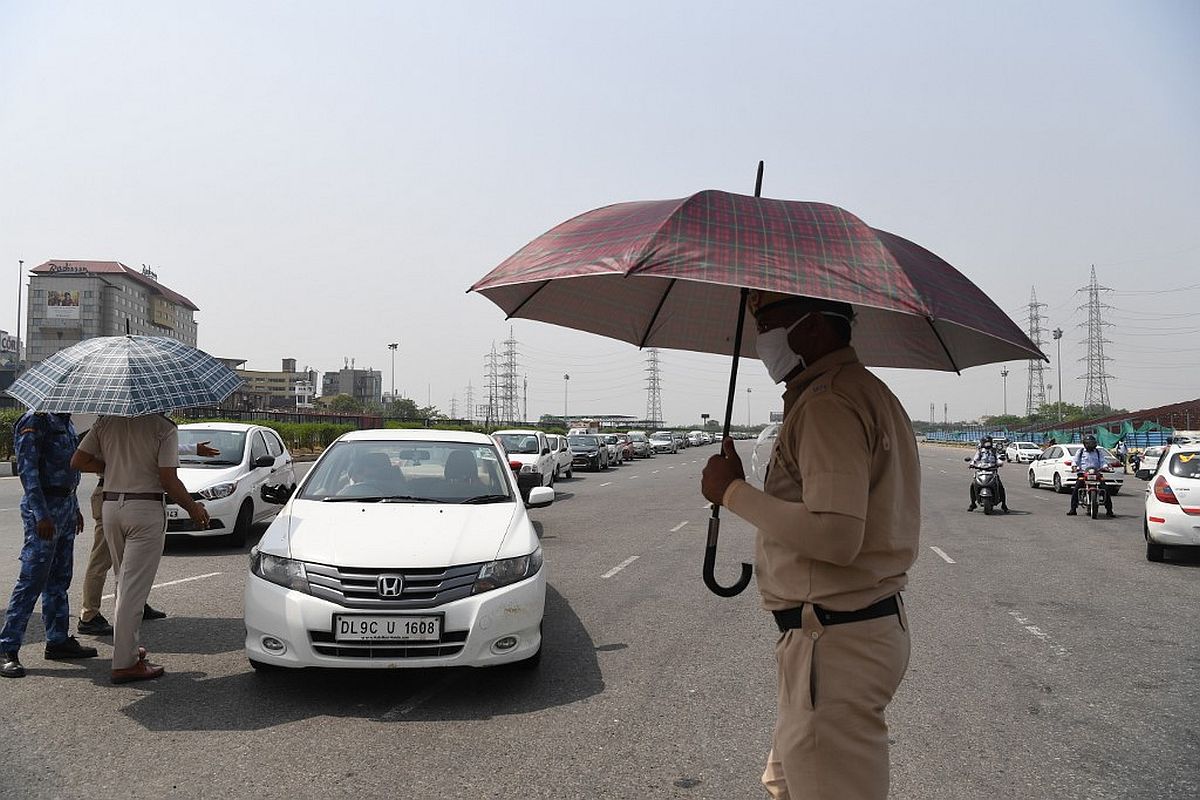Minor fire at North Block office of MHA, no one injured
The blaze was doused within 10-15 minutes following a prompt response from the Fire Department.
In all the zones, persons who are above 65 years of age, persons with co-morbidities, pregnant women and children below the age of 10 years, shall stay at home except for meeting essential requirements and for health purposes, the order said.

A long queue of vehicles is seen at Gurugram border as Haryana state sealed its border with Delhi during a government-imposed nationwide lockdown as a preventive measure against the COVID-19 coronavirus, in Gurugram. (Photo by Prakash SINGH / AFP)
The government on Friday has announced the extension of lockdown for two more weeks beyond May 3. This is the third consecutive lockdown after March 25 due to the novel coronavirus.
This time, the lockdown has come when most of the areas are segregated into red, orange and green zones, a step introduced by the government weeks ago to identify the most, medium and least/zero affected areas respectively.
Ministry of Home Affairs has released an order in respect to the lockdown giving details about what is allowed and what is not allowed in these three zones during the third phase of the lockdown.
Advertisement
“After a comprehensive review and in view of the lockdown measures having led to significant gains in the COVID-19 situation, the government has decided to further extend the lockdown,” the order read.
MHA issues order to further extend #lockdown for 2 weeks beyond 04.05.2020, to fight #Covid_19.
New guidelines have permitted considerable relaxations in #Lockdown3 restrictions, within the districts falling in the Green and Orange Zones. pic.twitter.com/hkp6NHaCjq— Spokesperson, Ministry of Home Affairs (@PIBHomeAffairs) May 1, 2020
https://twitter.com/PIBHomeAffairs/status/1256215258659803137
https://twitter.com/PIBHomeAffairs/status/1256215258659803137
As per the new guidelines, a limited number of activities will be prohibited throughout the country, irrespective of the zone.
These activities include travel by air, rail, metro and inter-state movement by road; running of schools, colleges, and other educational and training/coaching institutions.
A government order has said that the movement of individuals for all non-essential activities shall remain prohibited between 7 pm and 7 am. Local authorities shall issue orders imposing Section 144 and ensure strict compliance.
In all the zones, persons who are above 65 years of age, persons with co-morbidities, pregnant women and children below the age of 10 years, shall stay at home except for meeting essential requirements and for health purposes, the order said.
Further, the order said the Out Patient Department (OPD) and medical clinics shall be permitted to operate in Red, Orange and Green Zones with social distancing norms and other preventive measures.
However, these will not be permitted in the containment zones.
According to the press note released by the Ministry of Health, following are the services which will not be allowed irrespective of the zone:
Activities ‘not allowed’ in Red Zones
What is allowed in Red Zones?
What is allowed in the Orange Zones?
Apart from what is allowed in the Red Zones, the following are allowed in Orange Zones,
Activities allowed in Green Zones:
In Green Zones, all activities are permitted apart from those which are prohibited throughout the country, irrespective of the zones.
Buses can operate with upto 50% seating capacity and bus depots can operate with upto 50% capacity.
Apart from these activities, the government said that all good traffic will also be permitted.
Advertisement